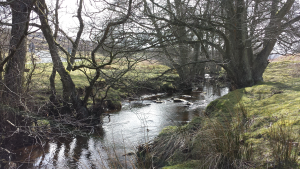
image for illustration: Peter Badcock
The Rivers at Risk report from the Campaign for National Parks and the Rivers Trust, lists changes needed to policy, legislation etc., as it confirms that 57% of rivers in NPs fail to meet ‘good’ ecological status, from sewage spills, agricultural pollution and toxic chemicals, and sewer overflows inside National Park’s (NPs) spill more than double the average outside.
The partners write:
In partnership with The Rivers Trust, we’ve launched our Rivers at Risk Report, setting out the latest full assessment of the state of rivers across the National Parks of England and Wales.
It provides evidence of the current situation and identifies the changes needed to policy, legislation and practice to secure the step-change in progress that is so urgently needed.
The waterways of the UK’s National Parks are iconic: internationally renowned wetlands, glacial lakes, chalk streams and some of the most biodiverse and sensitive rivers, they support natural flood management, help tackle climate change, and are much valued by millions of people as places for recreation and relaxation. These waterways are the lifeblood of our most precious landscapes.
National Parks were designated to preserve and enhance natural beauty, habitats and wildlife: we might expect their waters to be free from pollution, in far greater condition than other waterways, and protected to the highest standards. Yet this is not the case. Water in National Parks faces many challenges, just as it does across the UK.
…Research findings…
… even in precious National Parks, freshwaters are neglected: the majority of river water bodies in National Parks (57%) do not meet the minimum ecological standards set out in law i.e. they are classed as in moderate, poor or bad ecological status. The main reasons why National Park rivers are failing are: pollution from agriculture and rural land management (which affects 49% of river water bodies that are not achieving good status), and the water industry (responsible for 41% of failing water bodies within National Parks)…
